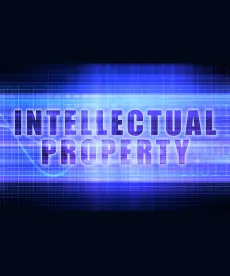A patentee may bring patent infringement claims against the United States government pursuant to 28 U.S.C. § 1498, in which Congress waived the sovereign immunity of the United States against such claims. Patent infringement actions against the government are similar to those brought against non-governmental entities, but they do have some idiosyncrasies. For example, patent owners can only sue the government for infringement in the United States Court of Federal Claims, as opposed to a district court, and jury trials are not available in the Court of Federal Claims.
Like a district court patent infringement case against a private litigant, the accused infringer (i.e., the United States) may assert defenses under 35 U.S.C. §§ 101, 102, 103 and 112. For example, in SecurityPoint Holdings, Inc. v. United States, the patent owner SecurityPoint Holdings, Inc. sued the United States, specifically the Transportation Security Administration (TSA), an agency of the U.S. Department of Homeland Security, for patent infringement. TSA stipulated to infringement of the patent-in-suit, which claimed a method for recycling trays and carts at airport security screening checkpoints, but alleged the patent was invalid because it would have been obvious at the time of invention. Case No. 1:11-cv-00268-EGB (Fed. Cir. Oct. 28, 2016). The Court of Federal Claims upheld the patent’s validity, finding that TSA did not meet its burden of proving by clear and convincing evidence that the patent would have been obvious under 35 U.S.C. § 103.
During the obviousness trial, TSA attempted to rely on a variety of purported prior art references. However, the court did not allow TSA’s experts to testify that the invention would have been obvious based on combinations of prior art, because TSA’s experts failed to disclose combinations of prior art in their expert reports. The Court held that the government’s experts were “seriously handicap[ped]” at trial based on this failure. Further, the Court held it could not (on its own) combine prior known elements to conclude the patent was obvious, as doing so would require an “impermissible exercise of hindsight.” In addition, while the Court recognized that the patent on its face was simple and used common implements, the Court emphasized that none of TSA’s four experts (three of whom work or had worked for TSA) had thought of or successfully implemented the trays and carts method taught by the patent, even though they all had worked on projects to improve security checkpoint efficiency.
In addition to finding that TSA failed to meet its burden of proving prima facie obviousness, the Court agreed that the objective indicia of nonobviousness weighed in SecurityPoint’s favor. First, SecurityPoint’s patent yielded unexpected results: an increase in efficiency in passenger throughput and a reduction in injuries to TSA screeners. Second, there was a long-felt, unmet need for improved efficiency at security checkpoints, as crowding had been a problem as early as the mid-1990s, long before it became even more pronounced after September 11, 2001. Third, others in the field (including TSA’s own experts) failed to solve the problem of improving security checkpoint efficiency around the time of the invention. Fourth, it was undisputed that TSA copied the claimed carts and trays method nationwide. Finally, TSA and others working in the field praised the patented invention as a breakthrough in improving checkpoint efficiency.
The SecurityPoint case was a significant win against the United States for the patentee, and demonstrates the intensive factual focus of an obviousness case. The case highlights at least two key factors on which litigants need to focus in obviousness cases: (1) the importance of ensuring that expert reports fully disclose (or rebut) all obviousness opinions, particularly opinions regarding combinations of prior art; and (2) the importance of fully developing (or rebutting) evidence of objective indicia of nonobviousness.





 />i
/>i
